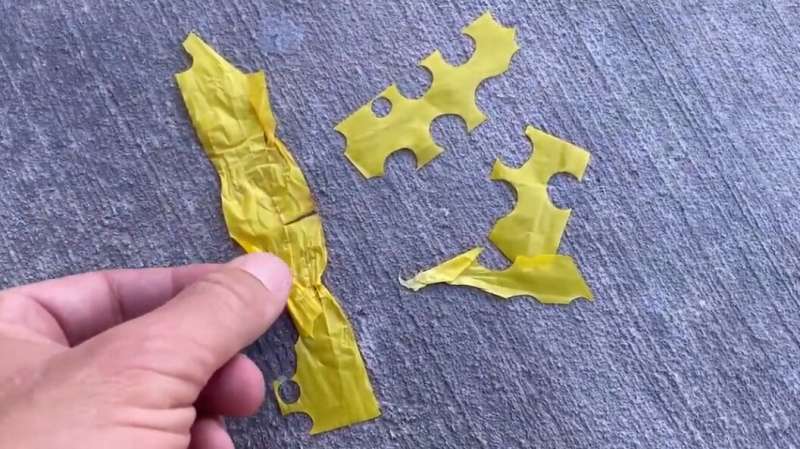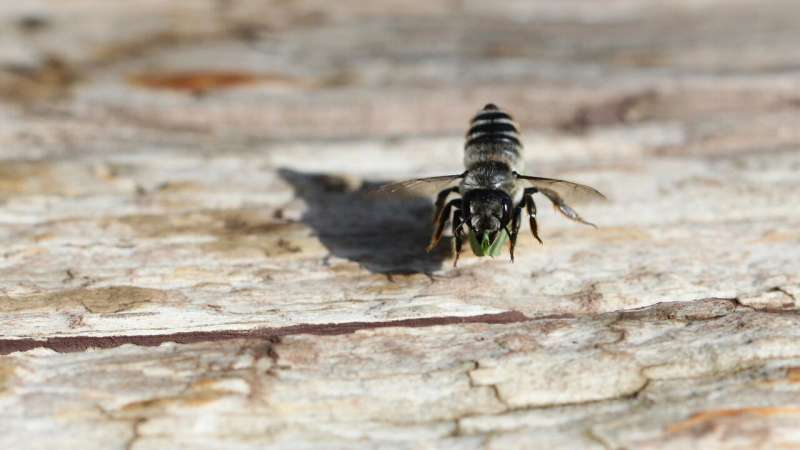Leaf-cutter bees as plastic recyclers? Not a good idea, say scientists

Plastic has become ubiquitous in modern life and its accumulation as waste in the environment is sounding warning bells for the health of humans and wildlife. In a recent study, Utah State University scientist Janice Brahney cited alarming amounts of microplastics in the nation's national parks and wilderness areas.
Bioengineers around the world are working to develop plastic-eating "super" enzymes that can break down the man-made material's molecular structure faster to aid recycling efforts. In another research effort published in 2019, entomologists noted leaf-cutter bees were using plastic waste to construct their nests. The researchers suggested such behavior could be an "ecologically adaptive trait" and a beneficial recycling effort.
Not so fast, says USU evolutionary ecologist Joseph Wilson. Just because bees can use plastic, doesn't mean they should.
Wilson and undergraduate researcher Sussy Jones, along with colleagues Scott McCleve, a naturalist and retired math teacher in Douglas, Arizona, and USU alum and New Mexico-based independent scientist Olivia Carril '00, MS'06, jointly authored an observational paper in the Oct. 9, 2020 issue of Science Matters, exploring the nest building behavior of bees in the genus Megachile.
"Leaf-cutter bees are among the most recognizable of solitary bees, because of their habit of cutting circles out of leaves to build their cylindrical nests," says Wilson, associate professor of biology at USU-Tooele. "We've heard reports of these bees using plastic, especially plastic flagging primarily in construction and agriculture, and we decided to investigate."

The researchers don't yet know how widespread the use of plastic by leaf-cutter bees is and they also know little about plastic's effects on the insects.
"Building from plastic could change the dynamics and environment of the bee's nest cells, because plastic doesn't breathe like natural materials," says Wilson, who produced a video about the phenomenon. "In the 1970s, some researcher let leaf-cutter bees nest in plastic straws and found ninety percent of the bees' offspring died because of fungal growth. The plastic sealed in the moisture and didn't allow gas exchange."
To deter bees' use of flagging, Wilson suggests use of fabric ribbons made from natural fibers.
"These materials are biodegradable and, if used by bees, will likely avoid the harmful moisture-capturing effects of plastic," he says.
Wilson says he and his colleagues need help from citizen scientists to be on the lookout for leafcutter bees using plastic garbage. He encourages observers to contact him on Twitter at "BeesinYourBackyard" (@BeesBackyard) or by email at joseph.wilson@usu.edu .
More information: Wilson, Joseph S., Sussy I. Jones, Scott McCleve, Olivia M. Carril. Evidence of leaf-cutter bees using plastic flagging as nesting material, Science Matters, 9 Oct 2020. sciencematters.io/articles/202010000003
Provided by Utah State University


















